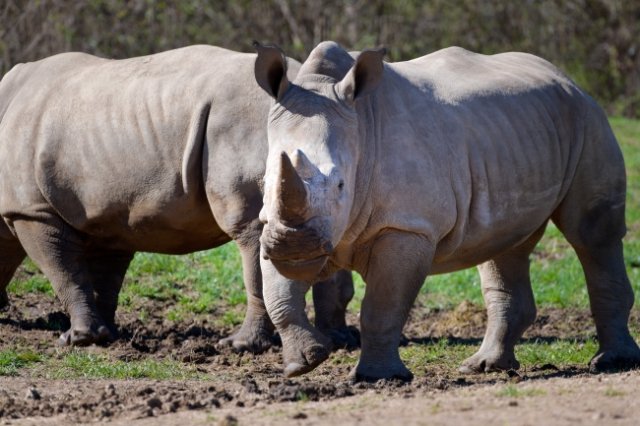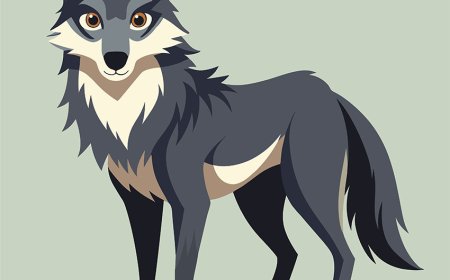All About Rhinos for Students: Horned Giants of Grasslands and Forests
Explore the powerful world of rhinos in this richly detailed article for students. Learn about their horns, habitats, behavior, and conservation challenges. Includes fun facts, vocabulary, and a quiz!

🦏 Rhinoceroses: Horned Giants of Grasslands and Forests
📚 Scientific Name and Classification
- Common Name: Rhinoceros (or “rhino”)
- Scientific Name: Rhinocerotidae (family)
- Order: Perissodactyla (odd-toed ungulates)
- Related animals: Horses and tapirs
There are five living species of rhinos, each with unique features:
- White rhino – Ceratotherium simum (Africa)
- Black rhino – Diceros bicornis (Africa)
- Indian rhino – Rhinoceros unicornis
- Javan rhino – Rhinoceros sondaicus
- Sumatran rhino – Dicerorhinus sumatrensis
All rhinos are large, heavy mammals known for their thick skin and one or two horns on their noses.
🌍 Habitat and Geographic Range
Rhinos live in Africa and Asia, depending on the species.
African Rhinos:
- White rhinos: Grasslands and savannas
- Black rhinos: Drier bushlands and scrub forests
Asian Rhinos:
- Indian rhinos: Tall grasslands, swamps, and forests of India and Nepal
- Javan rhinos: Rainforests of Indonesia
- Sumatran rhinos: Mountain forests in Southeast Asia
They prefer areas with plenty of water, shade, and food, and use mud wallows to cool off and protect their skin.
🌿 Diet and Feeding Habits
Rhinos are herbivores and eat a wide range of plant material.
Diet by species:
- White rhinos: Graze on grasses with wide, square lips
- Black rhinos: Browse on shrubs and bushes with pointed upper lips
- Indian, Javan, and Sumatran rhinos: Eat leaves, fruit, bark, and aquatic plants
They may spend 5–8 hours per day feeding, and chew slowly to process tough plant material.
💡 Rhinos often follow the same feeding trails and use sharp hearing and smell to detect danger while eating.
🧠 Behavior and Intelligence
Rhinos are mostly solitary, though some species occasionally live in small groups.
- White rhinos are more social, sometimes forming herds of females and calves
- Black rhinos and Asian rhinos are generally shy and prefer to be alone
- Rhinos use vocalizations (grunts, snorts, huffs), body posture, and scent marking to communicate
They have good hearing and sense of smell, but poor eyesight. Rhinos will often charge if startled—sometimes at trees or rocks they mistake for threats.
Despite their size, rhinos are fast and agile, able to run up to 35 mph (56 km/h) for short distances.
🦴 Physical Features and Unique Adaptations
- Size:
- White rhino: Up to 5,000 lbs (2,300 kg)
- Sumatran rhino: Around 1,500 lbs (700 kg)
- Height: 4.5–6 feet tall at the shoulder
- Horn(s): Made of keratin (same as human fingernails)
- African and Sumatran rhinos: Two horns
- Indian and Javan rhinos: One horn
- Skin: Thick (up to 2 inches), with folds that resemble armor
- Feet: Three toes; adapted for walking on soft, muddy ground
- Ears: Can swivel to detect sound from multiple directions
- Mouth: Adapted based on diet—browsers vs. grazers
They roll in mud not only to cool down, but to protect against parasites and sunburn.
🍼 Life Cycle and Reproduction
- Breeding: Year-round, but more common in wet seasons
- Gestation: 15–18 months (longest among land mammals after elephants)
- Calves: Usually one, very rarely two
- Weight at birth: 80–140 pounds
- Walk within a few hours
- Nurse for up to 18 months, but begin grazing earlier
Mother and calf stay together for about 2–3 years until the calf becomes independent.
Rhinos can live up to 40 years in the wild, and longer in zoos.
⚠️ Threats and Conservation
All rhino species are threatened or endangered, mainly due to poaching and habitat loss.
Key threats:
- Poaching for horns, which are falsely believed to have healing powers in some cultures
- Loss of habitat due to farming, logging, and human expansion
- Conflict with people, especially in shrinking territories
Conservation efforts:
- Anti-poaching patrols and tougher laws
- Relocation to protected areas
- Dehorning to protect rhinos from poachers
- Breeding programs in zoos and reserves
- Community involvement and education
Thanks to conservation, white rhino numbers have rebounded, but Javan and Sumatran rhinos are still critically endangered, with fewer than 100 individuals left in the wild.
🎉 Fun Facts About Rhinos
- The name “rhinoceros” means “nose horn” in Greek
- Rhinos have been around for 50 million years
- A group of rhinos is called a “crash”
- Despite their tough looks, rhinos love mud baths and belly rubs
- Rhinos can’t sweat—that’s why they roll in mud to stay cool
🧠 Vocabulary List
- Herbivore – An animal that eats only plants
- Grazing – Eating grass from the ground
- Browsing – Eating leaves and shrubs
- Perissodactyl – An odd-toed hoofed animal
- Keratin – A protein found in horns, nails, and hair
- Poaching – Illegal hunting
- Wallow – A shallow pool or mud area used for cooling off
- Endangered – At serious risk of disappearing forever
- Territory – The area an animal lives in and defends
- Dehorning – Removing a rhino’s horn to prevent poaching
✅ Rhino Quiz: Can You Crash Through These Facts?
- What are rhino horns made of?
A. Bone
B. Ivory
C. Keratin
D. Wood - What does a rhino use mud for?
A. Decoration
B. Hiding
C. Cooling down and protecting skin
D. Attracting mates - Which rhinos have only one horn?
A. White and Black
B. Indian and Javan
C. Sumatran and White
D. Javan and Black - What is a group of rhinos called?
A. Herd
B. Pod
C. Crash
D. Troop - What is one way people try to protect rhinos?
A. Painting them
B. Trapping them
C. Removing their horns (dehorning)
D. Giving them food
🧒 Kid-Friendly Summary: Rhinos
Rhinos are big, strong animals with horns on their noses and thick skin like armor. They live in the grasslands and forests of Africa and Asia. Even though they look tough, rhinos are usually calm and love to roll in mud to stay cool!
Most rhinos live alone and eat plants like grass and leaves. Sadly, many rhinos are in danger because of poaching and habitat loss. But thanks to conservation efforts, people are working hard to protect rhinos and their homes.





















































